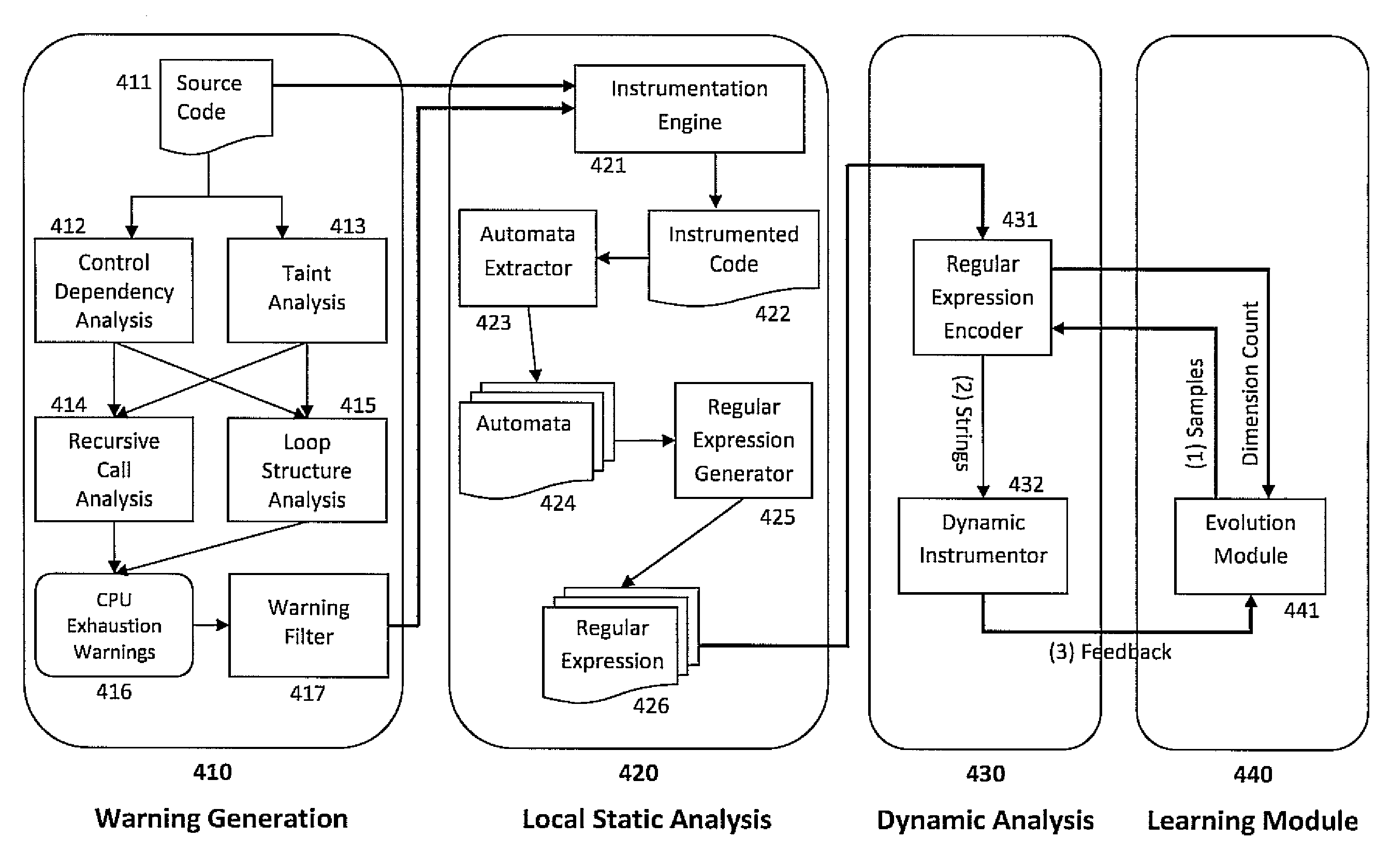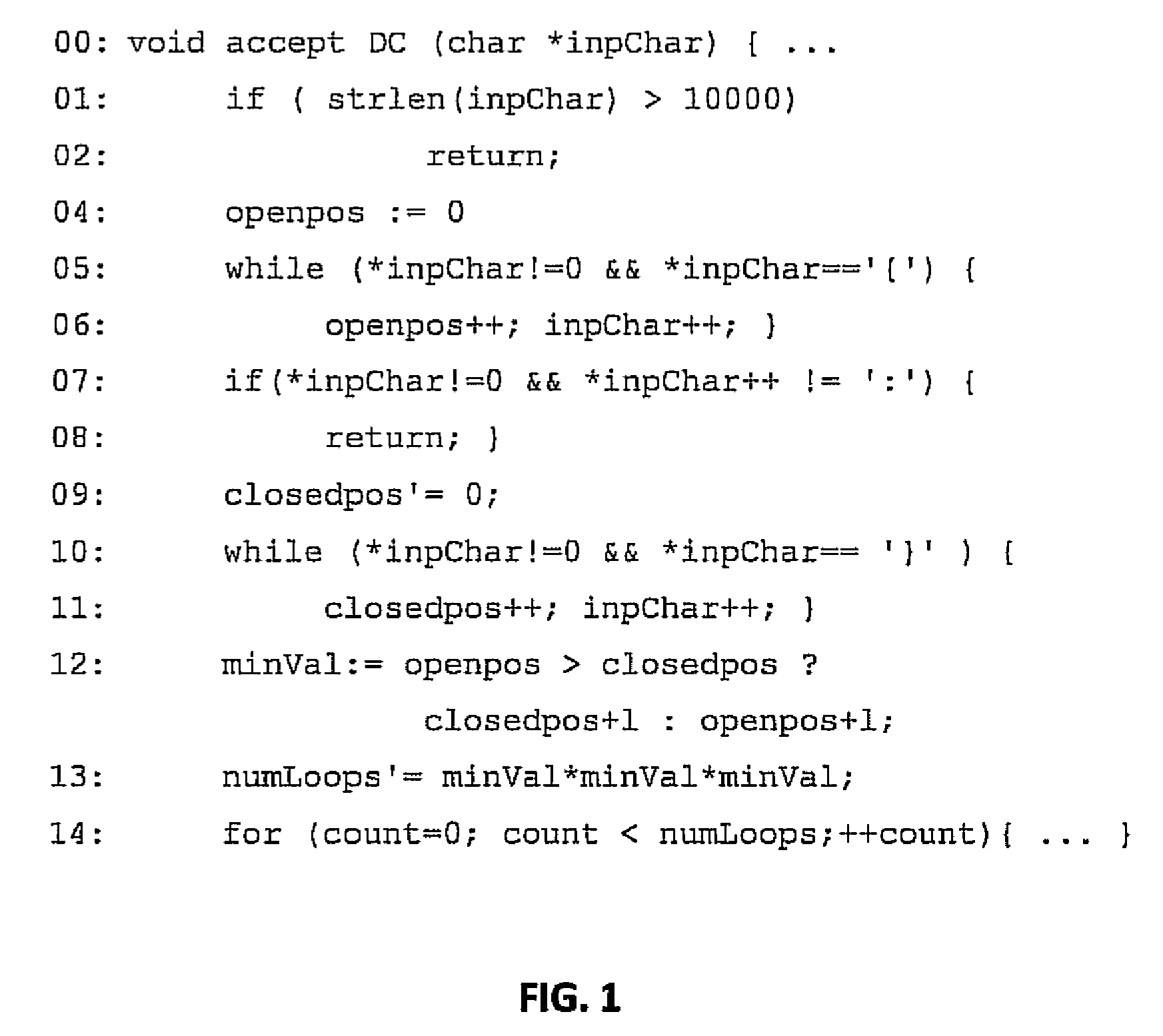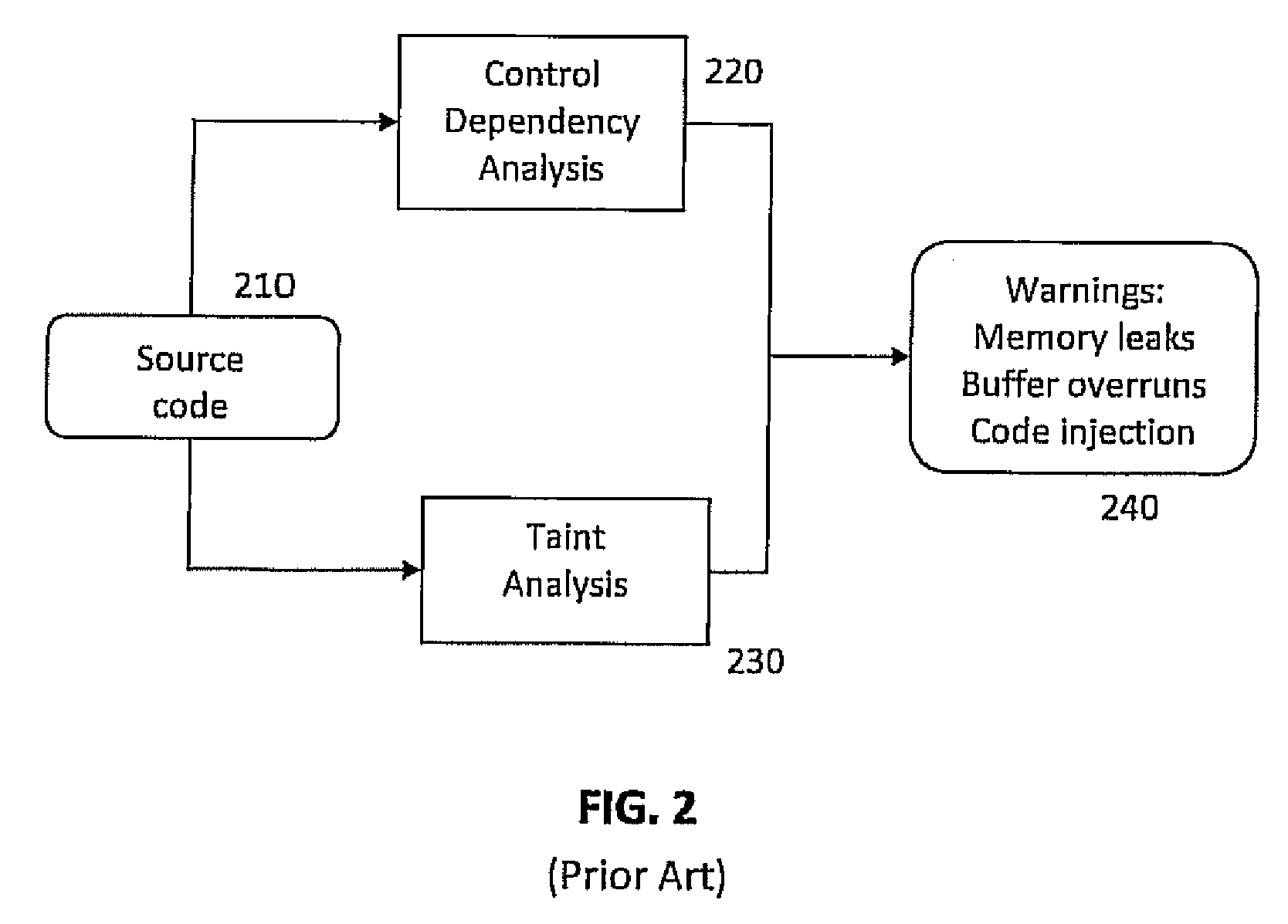Feedback-guided fuzz testing for learning inputs of coma
a learning input and fuzz technology, applied in the field of computer analysis, can solve the problems of increasing system load, unable to provide feedback, and unable to mount attacks, so as to achieve maximum feedback score and secure system
- Summary
- Abstract
- Description
- Claims
- Application Information
AI Technical Summary
Benefits of technology
Problems solved by technology
Method used
Image
Examples
Embodiment Construction
[0024]Embodiments of the present invention employ useful program facts gleaned by the static analysis of software to guide the brute-force approach of fuzz-testing to alleviate the effort of testing systems for vulnerabilities. Specifically, embodiments may use the warnings from a static analysis tool, such as SAFER described above, to focus the search on specific regions in the code. Focusing on the region of code highlighted by the warning, embodiments disclosed herein identify portions of code that process the user input leading up to the region of interest. These portions include sanity checks that perform checks on the inputs to reject certain input patterns. A static string analysis is then performed on the sanity checking functions to compute invariants in the form of automata and constraints that describe strings that pass the sanity checks in the form of finite state automata. The resulting invariants describe the behavior of sanity checks that can divert the control from r...
PUM
 Login to View More
Login to View More Abstract
Description
Claims
Application Information
 Login to View More
Login to View More - R&D
- Intellectual Property
- Life Sciences
- Materials
- Tech Scout
- Unparalleled Data Quality
- Higher Quality Content
- 60% Fewer Hallucinations
Browse by: Latest US Patents, China's latest patents, Technical Efficacy Thesaurus, Application Domain, Technology Topic, Popular Technical Reports.
© 2025 PatSnap. All rights reserved.Legal|Privacy policy|Modern Slavery Act Transparency Statement|Sitemap|About US| Contact US: help@patsnap.com



